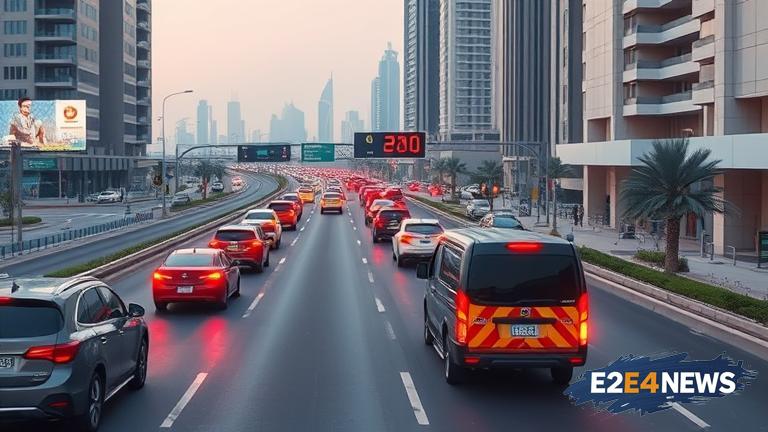The city of Dubai has taken a significant step towards revolutionizing its traffic management system by incorporating sensor technology into its roads. This innovative approach aims to reduce congestion and minimize waiting times at intersections, making commutes faster and more efficient for residents and visitors alike. By embedding sensors underneath the roads, the system can detect the presence of vehicles and pedestrians, allowing for real-time monitoring and optimization of traffic flow. The sensors work in tandem with the city’s intelligent transportation system, providing valuable data on traffic patterns and helping to identify areas of congestion. This information is then used to adjust traffic light timings, ensuring that vehicles are given priority when needed. The result is a significant reduction in waiting times at intersections, with some areas experiencing a decrease of up to 30%. The sensor technology is also integrated with the city’s public transportation system, allowing for seamless coordination between buses and traffic lights. This means that buses are given priority at intersections, reducing travel times and making public transportation a more attractive option. The implementation of this technology is part of Dubai’s broader vision to become a smart city, with a focus on leveraging technology to improve the quality of life for its citizens. The city has already made significant strides in this area, with the introduction of smart parking systems, intelligent energy management, and advanced waste management solutions. The sensor-embedded roads are just one example of how Dubai is using technology to tackle everyday challenges and create a more sustainable, efficient, and connected city. The project has been well-received by residents, who have reported a noticeable decrease in traffic congestion and waiting times. The technology has also been praised for its potential to reduce accidents, as it allows for more efficient traffic flow and reduces the likelihood of vehicles speeding or running red lights. Furthermore, the sensor technology has the potential to be integrated with other smart city initiatives, such as smart traffic signals and intelligent pedestrian crossings. This could lead to even more significant reductions in congestion and waiting times, making Dubai an even more attractive place to live and work. The city’s commitment to innovation and technology has earned it a reputation as a hub for smart city development, with many other cities around the world looking to Dubai as a model for their own smart city initiatives. The sensor-embedded roads are a testament to Dubai’s forward-thinking approach to urban planning and its dedication to creating a better quality of life for its citizens. As the city continues to grow and develop, it is likely that we will see even more innovative solutions to everyday challenges, further solidifying Dubai’s position as a leader in smart city technology. The use of sensor technology in traffic management is not unique to Dubai, but the city’s approach is notable for its scale and ambition. The project has required significant investment and collaboration between government agencies, private companies, and technology providers. The results, however, have been well worth the effort, with the city experiencing a significant reduction in traffic congestion and a corresponding improvement in air quality. The success of the project has also highlighted the importance of data-driven decision making in urban planning, with the sensor technology providing valuable insights into traffic patterns and behavior. This data can be used to inform future urban planning decisions, ensuring that the city’s infrastructure is designed to meet the needs of its citizens. In conclusion, Dubai’s sensor-embedded roads are a significant step forward in the city’s quest to become a smart city, with the potential to reduce traffic congestion, improve air quality, and enhance the overall quality of life for its citizens. The project is a testament to the city’s commitment to innovation and technology, and its success is likely to be studied by other cities around the world as they seek to develop their own smart city initiatives.





